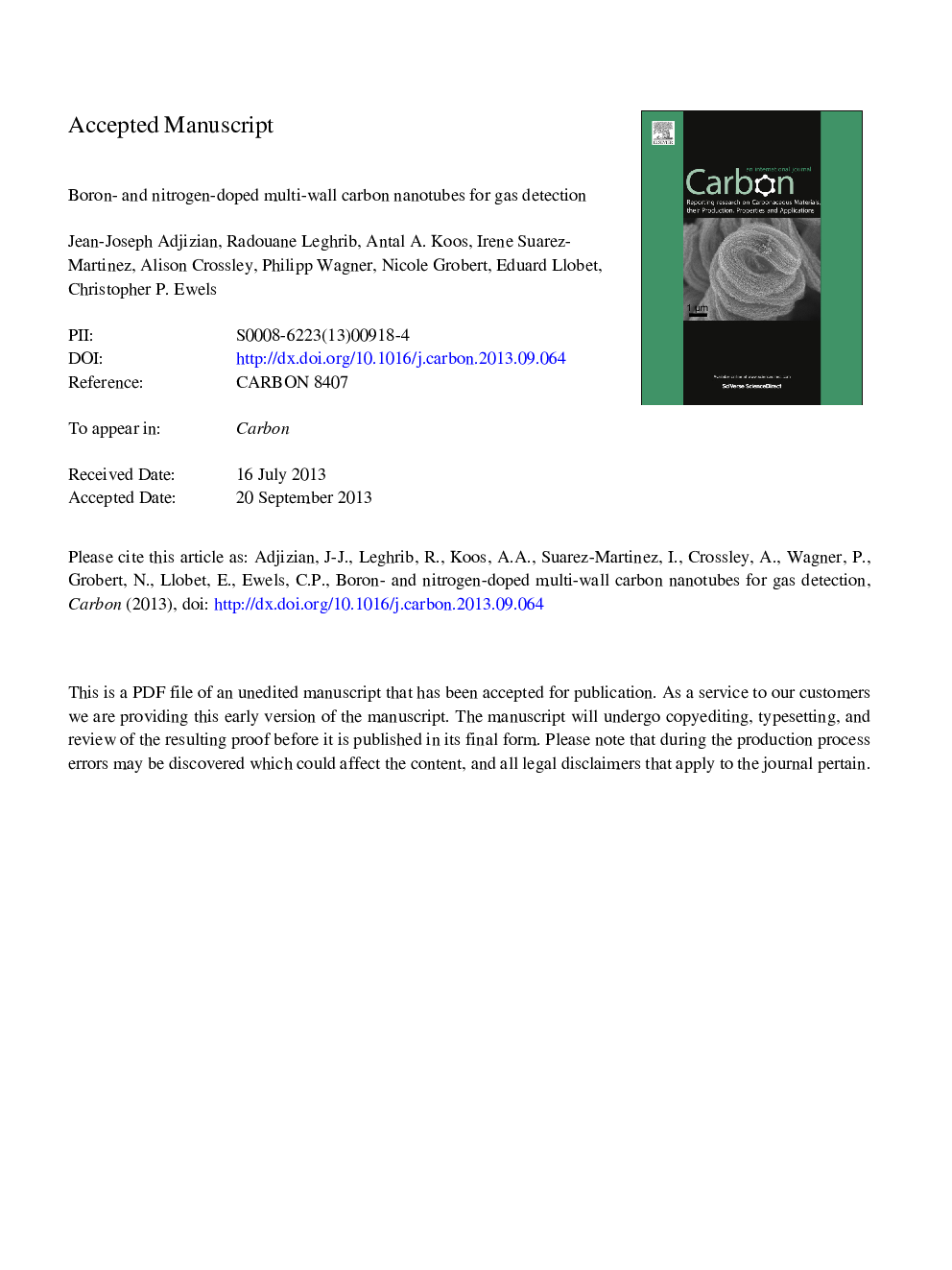| Article ID | Journal | Published Year | Pages | File Type |
|---|---|---|---|---|
| 7855875 | Carbon | 2014 | 34 Pages |
Abstract
The response of pristine, nitrogen and boron doped carbon nanotube (CNT) sensors to NO2, CO, C2H4 and H2O at ppm concentrations was investigated at both room temperature and 150 °C. N-doped CNTs show the best sensitivity to nitrogen dioxide and carbon monoxide, while B-doped CNTs show the best sensitivity to ethylene. All tubes (including undoped) show strong humidity response. Sensing mechanisms are determined via comparison with density functional calculations of gas molecule absorption onto representative defect structures in N and B-doped graphene. N-CNTs show decreased sensitivity with temperature, and detection appears to occur via gas physisorption. B-CNTs appear to react chemically with many of the absorbed species as shown by their poor baseline recovery and increasing sensitivity with temperature. This limits their cyclability. Overall gas sensitivity is as good or better than post-growth functionalised nanotubes, and used in combination, CNTs, N-CNTs and B-CNTs appear highly promising candidates for cheap, low power, room temperature gas sensing applications.
Related Topics
Physical Sciences and Engineering
Energy
Energy (General)
Authors
Jean-Joseph Adjizian, Radouane Leghrib, Antal A. Koos, Irene Suarez-Martinez, Alison Crossley, Philipp Wagner, Nicole Grobert, Eduard Llobet, Christopher P. Ewels,
